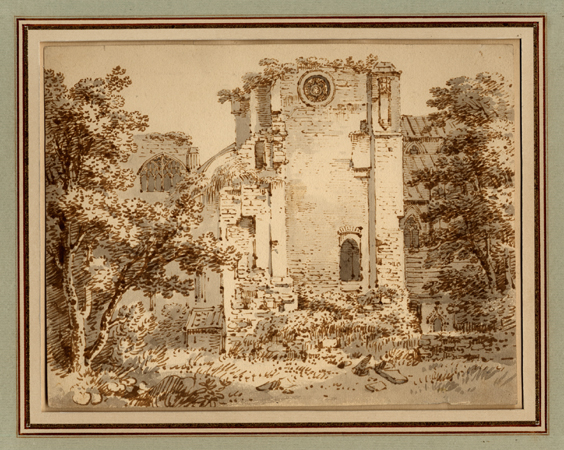LANDSCAPE AND MEMORY
- d'Onofri, Landscape with Battus
- after Brueghel, Alpine Landscape
- School of Antwerp, Imaginary Landscape
- Sadeler, Facade of a Temple
- van Noort, Landscape with the Temple
- Davent, Landscape with Ancient Ruins
- att. to Pozzoserato, Mountainous Landscape
- van de Velde II , Interior of the Ruins
- Waterloo, Two Travelers
- Grimaldi, Landscape
- Saftleven, Landscape with a Man
- Barrière, View of the Town
- Monti, Landscape with a River
- Meyeringh, Landscape with Mercury
- Bout, The Skaters
- Lelu, A Town in Portugal
- Dietricy, Heroic Landscape
- Le Loup , View of the Town
- att. to Verrijk , River Scene
- Kolbe, Landscape with a Cowherd
- Roos, Vast Mountainous Landscape with Herds
- Roman School, Lago d’Albano,
- Isabey, Ruines du Château
- Williams, A Part of Melrose Abbey
- Palmer, The Morning of Life
- Richardson, Loggers by a Lake
- att. to Preller, Oak Trees
- Lalanne, Plage des Vaches
- Miller, A Road in Winter
- Haden, Sunset in Ireland
- Doeleman, Stormy Sky
- Meryon, Nouvelle Zélande
- Latenay, Autumn Trees
- German School, Birches
- Cameron, Ben Lomond
- Yeats, July 4, 1908
- MacLaughlan, Rossinières
- Cotton, Spring Landscape
- Legros, Une Vallée
- Torre-Bueno, Farmlands
- Jungnickel, Loser - Altaussee
- Komjati, Willows
- Wengenroth, Bucks County
- Kantor, Abstracted Landscape
- Eby, Christmas Trees
- Massen, Landscape with Trees
A Part of Melrose Abbey
Drawing in reed (?) pen and brown ink and grey wash on wove paper, 202 x 260 mm., signed or inscribed verso in pencil with a note of the subject.
Williams was a Scottish born and trained draughtsman and watercolorist who made a life-defining trip to Italy and Greece and was forever afterwards named “Grecian” Williams. Despite this, it is the work he did closer to home that seems most interesting today. Melrose Abbey is in Scotland, about an hour south of Edinburgh. What survives of it -- and it is a magnificent ruin – derives from its rebuilding in the 15th century after destruction of the earlier abbey. Williams has chosen one of the more prosaic parts of the structure to sketch here, the ruins of a small tower overgrown with vegetation, but the scene is as evocative as any he might have picked. Evocative, though, not of the fifteenth century but of the end of the eighteenth, when he saw it. I think it was Jane Austen, Williams’ almost exact contemporary, who wrote that nothing so improved a landscape as a ruin.
![]()
